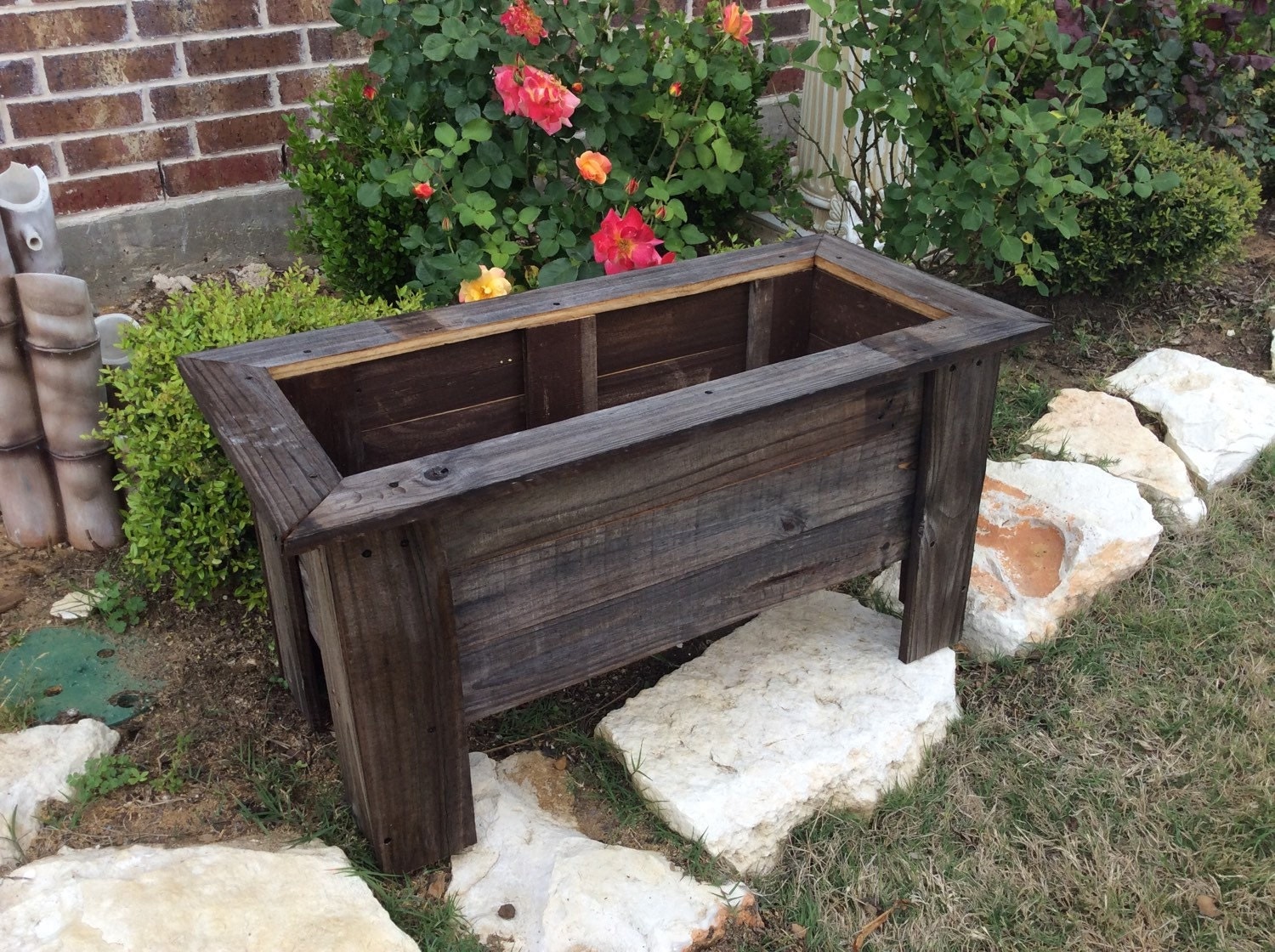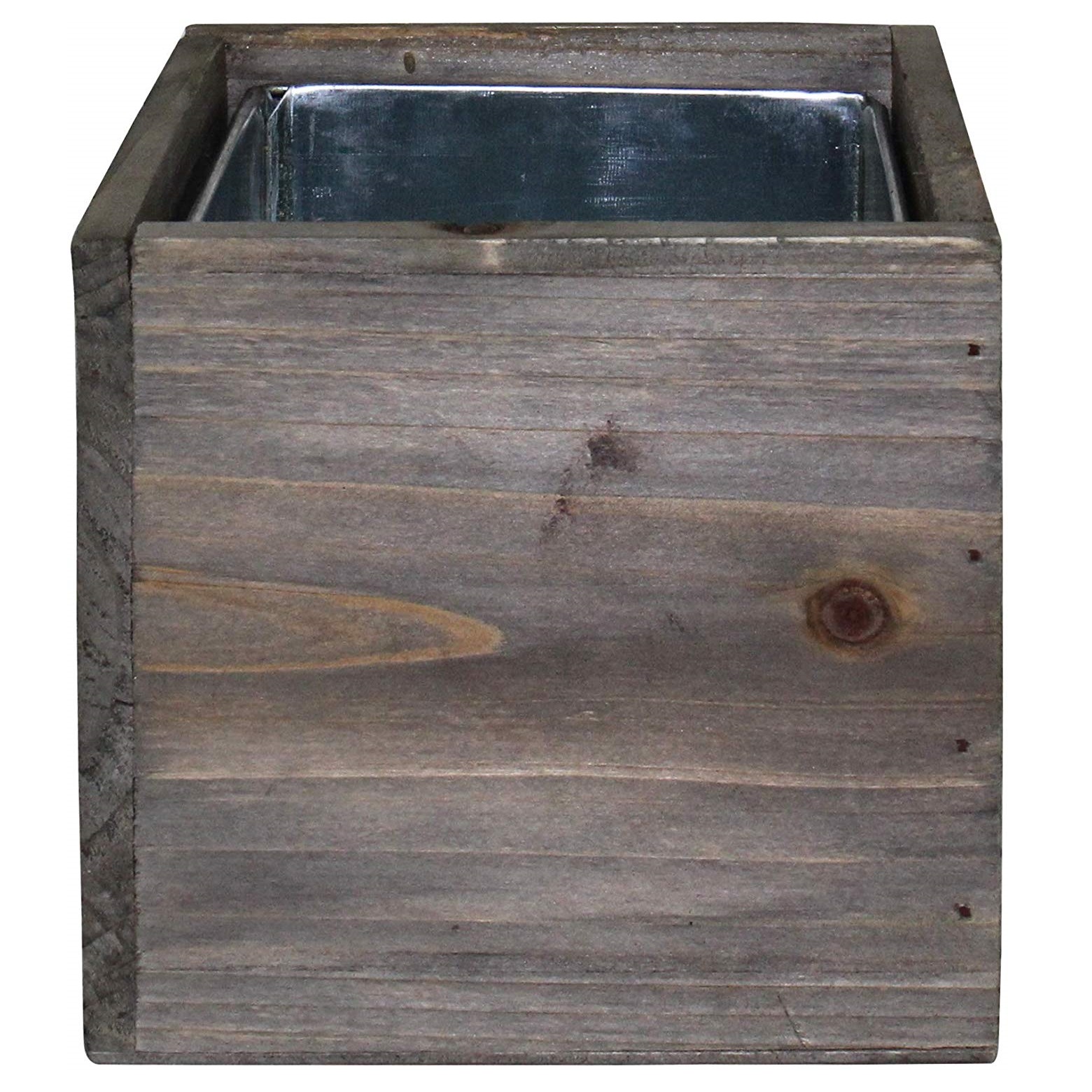Embark on a journey into the realm of rustic wood planter boxes, where nature’s charm meets functional elegance. These enchanting creations seamlessly blend the raw beauty of wood with the vibrancy of greenery, offering a touch of earthy sophistication to any space.
Delve into the intricacies of designing, constructing, and nurturing rustic wood planter boxes, unlocking the secrets to creating captivating living displays that celebrate the harmony between nature and design.
Rustic Wood Planter Box Design

Rustic wood planter boxes exude a charm that blends the beauty of nature with functional gardening. Their rough-hewn surfaces and natural imperfections create a unique aesthetic that complements a variety of outdoor spaces.
Shape and Size
Rustic wood planter boxes come in various shapes and sizes to accommodate different plant species and garden layouts. Rectangular boxes are a classic choice, offering ample space for root growth. Square boxes are suitable for smaller plants or as decorative accents. Round or oval boxes provide a softer, more organic touch to the garden.
The size of the planter box should be proportionate to the size of the plants you intend to grow. Larger plants, such as shrubs or small trees, require larger boxes to provide adequate root space. Smaller plants, such as herbs or flowers, can thrive in smaller boxes.
Wood Type and Finishes
The type of wood used for the planter box significantly influences its durability and appearance. Cedar and redwood are popular choices due to their natural resistance to rot and decay. Pine and fir are also suitable options, but they may require additional treatment to enhance their longevity.
To enhance the rustic aesthetic, consider using wood with natural imperfections, such as knots, cracks, or bark. These imperfections add character and a sense of authenticity to the planter box.
Various wood finishes can be applied to protect the planter box from the elements and enhance its appearance. Staining or painting the wood can add a touch of color and create a more finished look. Alternatively, leaving the wood untreated allows it to weather naturally, developing a unique patina over time.
Incorporating Natural Elements
To further embrace the rustic aesthetic, consider incorporating natural elements into the design of your planter box. Attaching pieces of bark to the sides of the box adds texture and visual interest. Adding small branches or twigs as supports for climbing plants creates a natural trellis.
Filling the planter box with a variety of plants, including wildflowers, herbs, and small shrubs, enhances the natural appeal. These plants will attract pollinators and other beneficial insects, creating a thriving ecosystem in your garden.
Construction Techniques for Rustic Wood Planter Boxes

Constructing rustic wood planter boxes involves selecting suitable wood, assembling them using appropriate techniques, and incorporating drainage and lining for optimal plant growth. Let’s explore the steps involved in detail:
Types of Wood for Rustic Planter Boxes
For a rustic aesthetic, consider using reclaimed wood, such as barn wood or weathered lumber. These woods have a unique patina and natural imperfections that add character to the planter box. Other suitable options include cedar, redwood, or cypress, which are naturally resistant to rot and decay.
Assembling a Rustic Wood Planter Box
Begin by cutting the wood into the desired shape and size. Use a saw to cut the wood to length and a miter saw to create angled cuts for the corners. Join the pieces using wood glue and screws or nails. Countersink the screws or nails slightly below the surface of the wood for a cleaner finish. Reinforce the corners with metal brackets or L-shaped braces for added durability.
Drainage and Lining
Drainage holes are essential to prevent waterlogging and root rot. Drill small holes in the bottom of the planter box, spacing them evenly. Line the planter box with a breathable material such as landscape fabric or burlap to retain moisture while allowing excess water to drain.
Plant Selection and Care for Rustic Wood Planter Boxes

Rustic wood planter boxes add a touch of charm and warmth to any outdoor space. To complement the rustic style, it’s essential to choose plants that have a natural, unfussy appearance. Consider native species or varieties with smaller leaves and flowers, such as succulents, herbs, or wildflowers.
When selecting plants, consider the size and shape of the planter box. Choose plants that will fit comfortably within the space, allowing for adequate air circulation and growth. To maintain the rustic appearance, opt for plants with weathered or aged foliage, such as ornamental grasses or creeping vines.
Soil Requirements, Rustic wood planter box
The soil in rustic wood planter boxes should be well-draining and have a neutral to slightly acidic pH. A mixture of potting soil, compost, and perlite provides good drainage and aeration. For succulents, use a cactus mix with additional perlite or pumice to ensure proper drainage.
Watering Needs
The watering needs of plants in rustic wood planter boxes will vary depending on the species and weather conditions. Generally, water deeply and infrequently, allowing the soil to dry out slightly between waterings. Avoid overwatering, as this can lead to root rot and other problems.
Maintaining the Rustic Appearance
To maintain the rustic appearance of the planter box, it’s important to protect the wood from moisture and decay. Seal the interior of the box with a water-resistant sealant or liner, and place the box on a raised surface to promote drainage. Over time, the wood may weather and develop a patina, adding to the rustic charm. However, if desired, you can apply a clear sealant to protect the wood and maintain its original appearance.
